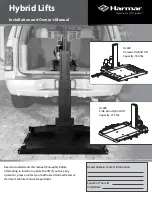
3-8
Setup and Installation
6. Once you have determined that the board is acceptable, set the base
address. The next section explains how to set the base address.
Setting the Base Address
Note:
Before setting the base address switches, check the different
requirements for Windows 95/98 and Windows NT. Refer to “Configuring
the PIO Series” in
Using DriverLINX with Your Hardware—Keithley PIO
Series
manual, which you printed in step 9 of “Installing the DriverLINX
Software.”
The base address is the only item you need to set on the PIO-32 Series
boards. The PIO-32 Series boards normally use a block of eight I/O
addresses. The factory default base address is 300h. If 300h was assigned
to the board when you ran the DriverLINX Plug and Play Wizard, you do
not need to set the address switch. Otherwise, reconfigure the base
address switch (labeled BASE ADDRESS on the board) to conform to the
base address assigned when you ran the Wizard.
The base address switch block contains eight switches, labeled 1 through
8. Switch 1 corresponds to the most significant bit (MSB) of the base
address (A9); switch 7 corresponds to the least significant bit (LSB) of the
base address (A3). Switch 8 is reserved.
You place a switch in the ON position (logic 0) by sliding the switch
toward the top (numbered side) of the switch block. You place a switch in
the OFF position (logic 1) by sliding the switch toward the bottom
(unnumbered side) of the switch block. Figure 3-1 illustrates the setting
for a base address of 300h; switches 1 and 2 are in the OFF position and
switches 3, 4, 5, 6, 7, and 8 are in the ON position (A9 and A8 are logic 1,
A7 through A3 are logic 0).
















































